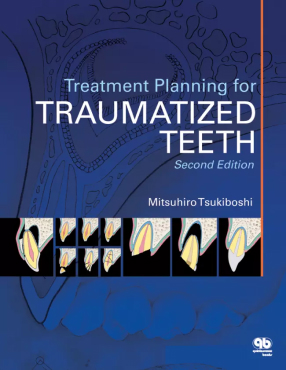Home » Autotransplantation of Teeth and Treatment Planning for Traumatized Teeth

Mitsuhiro Tsukiboshi, D.D.S., PhD., Aichi, Japan
Complex treatment plans in implantology often include situations where the choices of autotransplantation of teeth (ATT) have been overlooked. If recipient sites are jeopardized for placing implants, more time, cost and techniques are required. However, if there is a good candidate as a donor tooth found in the same mouth, transplantation can be the more appropriate option than implant. For example, the case where sinus lifting or ridge augmentation is indicated can be preferable and advantageous for ATT. If patients are younger than twenty, implant is hardly indicated.
In my presentation, the advantages, wound healing, techniques, indications and prognosis will be discussed. The lecture will be extensively illustrated with many clinical cases of ATT.
Learning objects – participants should be able to:
Dental trauma is an acute disease involving the hard tissues, the pulp, and or the periodontium, and is more frequently seen in young people. Since infection is seldom associated with traumatized teeth, treatment options can be conservative. In other words, in dental trauma, pulpotomy is preferred over pulpectomy, simple composite restorations over complex prosthetics, and replantation over extraction. The concept of “minimal intervention” should be upheld when treating traumatized teeth. In my presentation, I will be talking about minimal intervention for all types of traumatized teeth. Learning objects of treatment planning for traumatized teeth:
The technique of successful shallow pulpotomy and bonding the fractured fragment to the original tooth with composite are discussed minutely.
Orthodontic extrusion versus surgical extrusion will be compare.
Treatment planning and healing modalities in root fracture are discussed. There are four types of healing modalities seen after the reposition splinting in root fracture; healing with calcified tissue, interposition of connective tissue, interposition of bone and connective tissue, and interposition of granulation tissue. The efficacy of diagnosis using CBCT will be discussed at the same time.
Unique pulp healing named ‘transient apical breakdown (TAB)’ which can be observed in the subluxation injury of mature teeth around puberty is discussed. TAB is a series of healing process of the pulp of the mature teeth which have been involved with pulp ischemia by luxation injuries. Another topic will be walking bleaching technique of discolored crowns of endodontically treated teeth.
The importance of on-site diagnosis and repositioning is discussed.
Treatment planning of intrusive luxation will be discussed according to the IADT guideline. The differentiation between intrusive luxation and lateral luxation will be discussed.
Whether avulsed teeth can survive or not depends on the extra-oral time and storage media. Optimal healing is the PDL reattachment without root resorption. Pulp revascularization (pulp healing) can be expected in immature teeth. In compromised replantation, two types of root resorption complicate the healing; replacement resorption and inflammatory resorption. The former is so-called ankylosis and direct contact bone and roots. The speed of root replacement with bone depends on the patients’ age. Ankylosis can not be arrested by any means.
Inflammatory resorption is caused by partial PDL loss and pulp necrosis, progresses very rapidly without relation to the age of patients, and would result in the tooth loss if it is not treated. But inflammatory resorption can be arrested by endo-treatment in the early stage of the involvement.
In the presentation the decision making of avulsed teeth in various situations is discussed with dividing it into two categories; immediate replantation and delayed one.
“Decoronation” and implant option will also be discussed.
Share
Want to be up to date with our most recent events
and news? Subscribe to our newsletter!